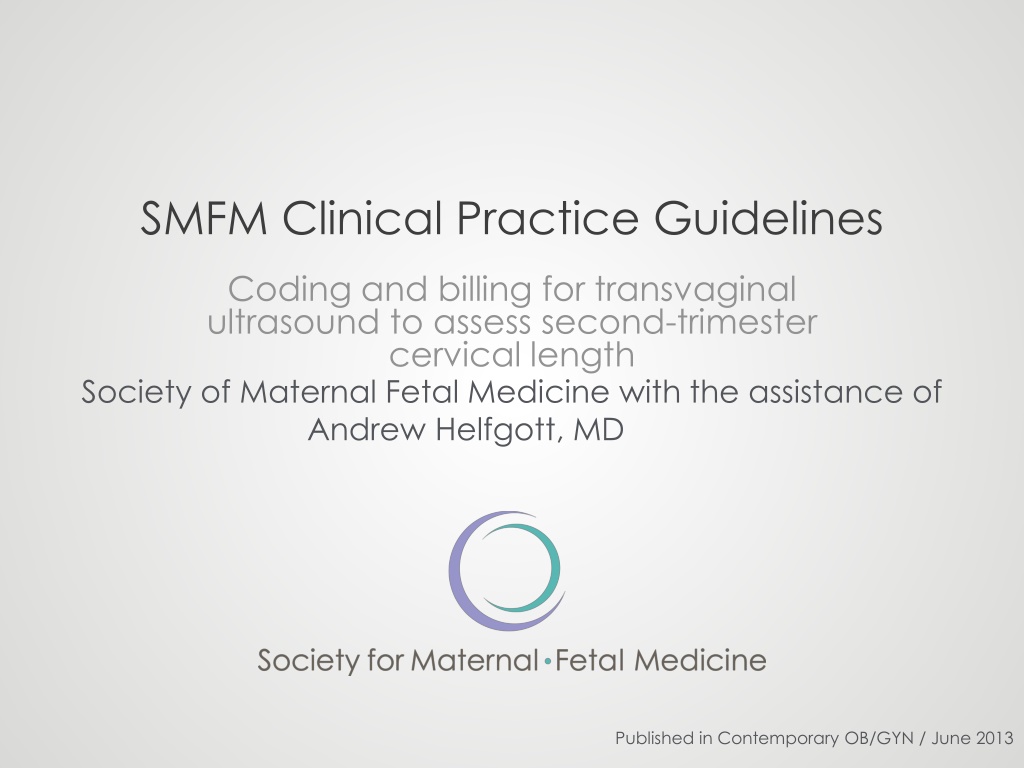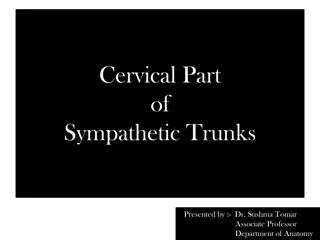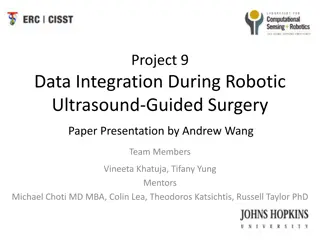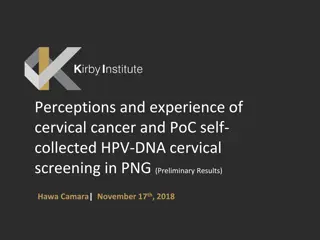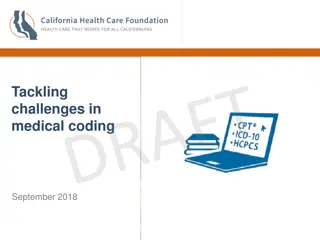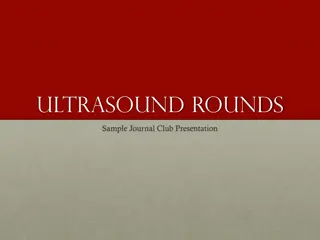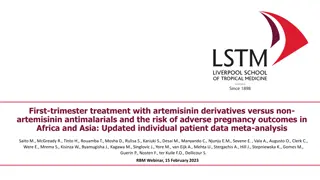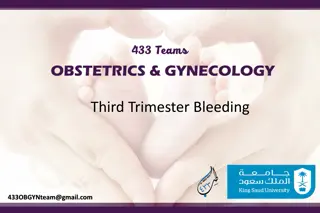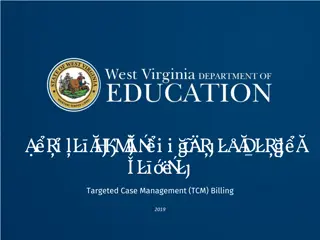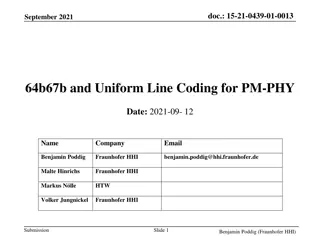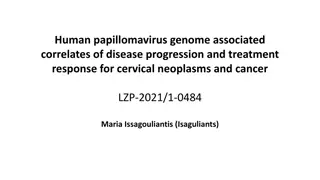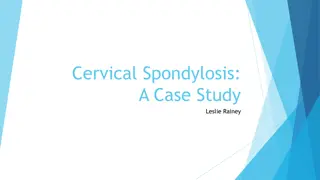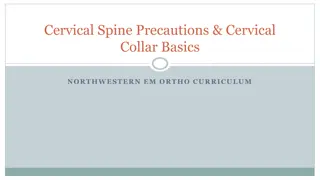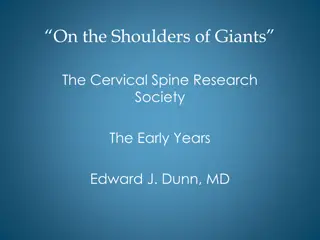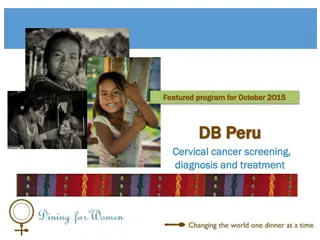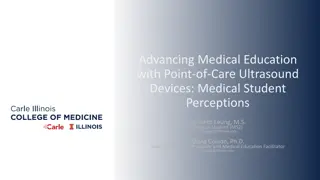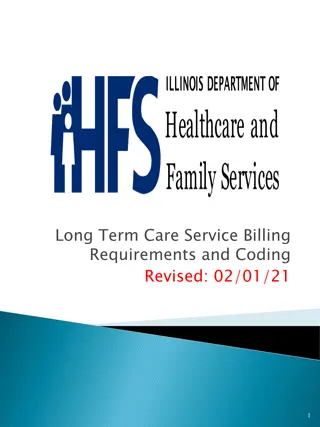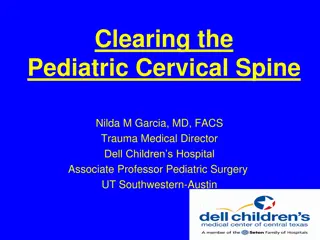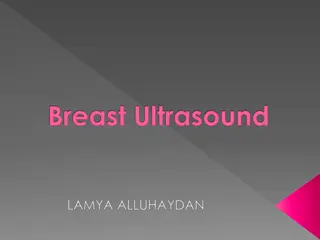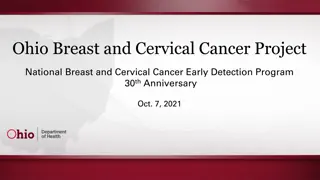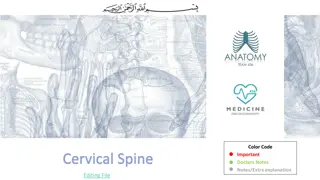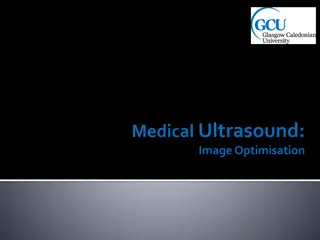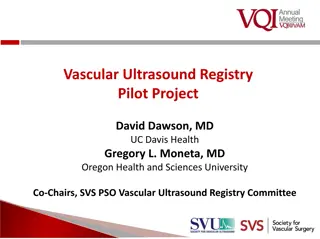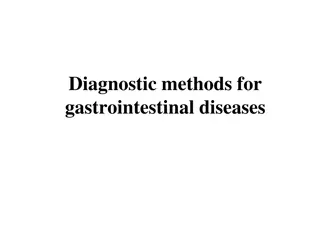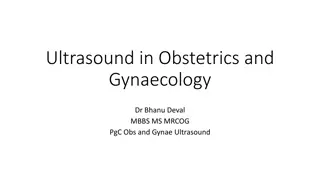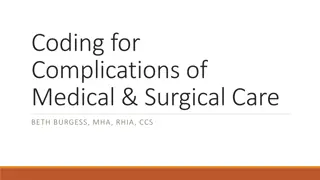Guidelines for Coding & Billing Transvaginal Ultrasound in Second-Trimester Cervical Length Assessment
Guidelines from the Society for Maternal Fetal Medicine provide detailed recommendations on the proper technique and billing procedures for transvaginal ultrasound assessments of cervical length in pregnant women. Training requirements, quality control measures, and screening protocols for low and high-risk pregnancies are discussed, along with coding guidelines and billing scenarios for the procedures. The CLEAR program offers educational resources for healthcare professionals to ensure accurate and standardized sonographic measurements during pregnancy.
Download Presentation

Please find below an Image/Link to download the presentation.
The content on the website is provided AS IS for your information and personal use only. It may not be sold, licensed, or shared on other websites without obtaining consent from the author. Download presentation by click this link. If you encounter any issues during the download, it is possible that the publisher has removed the file from their server.
E N D
Presentation Transcript
Society for Maternal Fetal Medicine SMFM Clinical Practice Guidelines Coding and billing for transvaginal ultrasound to assess second-trimester cervical length Society of Maternal Fetal Medicine with the assistance of Andrew Helfgott, MD Published in Contemporary OB/GYN / June 2013
Society for Maternal Fetal Medicine Technique Sonographic assessment of CL should be performed only by individuals trained in the technique. A TVU CL assessment needs to be performed with proper technique, quality control, and monitoring to yield accurate results. To ensure quality, the Perinatal Quality Foundation convened a cervix education task force in November 2011. The goal of the task force was to develop a consensus educational program that presented in a widely available format the standard criteria for sonographic CL measurements during pregnancy. The Cervical Length Education and Review (CLEAR) program is a product of the task force discussions. The CLEAR program provides 3 lectures, an optional examination, and a scored cervical image review. The lectures are available at no charge. Documentation of completion of the CLEAR program, as well as continuing medical education (CME) credits, will be provided to those who complete the lectures and pass the examination and the image review. More information is available at CLEAR: Cervical Length Education and Review (www.perinatalquality.org/CLEAR).3
Society for Maternal Fetal Medicine Technique When performed in low-risk, asymptomatic women for purposes of preterm birth (PTB) screening, a single TVU CL determination obtained between about 18 weeks and 24 weeks gestation is sufficient. Serial cervical exams are usually not indicated in low-risk women, but they are appropriate in high-risk pregnancies (ie, singleton gestations with prior PTB). Given reports that 57% of short CL on TVU are not detected on transabdominal ultrasound and that the TVU screening approach was the one used in all published trials, TVU is the preferred approach for diagnosing cervical shortening. Payment for a single TVU examination performed between 18 and 24 weeks gestation for CL assessment in low-risk patients (ie, singleton gestations without prior PTB) is appropriate. When screening high-risk patients, a series of TVU CL measurements can be performed every 2 weeks between 16 and 24 weeks.
The SMFM Coding Committee has provided the following guidance for coding cervical screening: Society for Maternal Fetal Medicine CPT 76817, Ultrasound, pregnant uterus, real time with image documentation, transvaginal. CPT Code 76817 may be billed alone or with other ultrasound services at the same session. If TVU for cervical screening is performed on the same date of service as a transabdominal ultrasound performed for other clinical indications, both ultrasound procedures would be billed. For example: 76805, Ultrasound, pregnant uterus, real time with image documentation, fetal and maternal evaluation, after first trimester (> or = 14 weeks 0 days), transabdominal approach; CPT 76817, Ultrasound, pregnant uterus, real time with image documentation, transvaginal; or 76811, Ultrasound, pregnant uterus, real time with image documentation, fetal and maternal evaluation plus detailed fetal anatomic examination, transabdominal approach; single or first gestation;
Society for Maternal Fetal Medicine Major clinical implications of an isolated choroid plexus According to the 2012 American Medical Association CPT: If transvaginal examination is done in addition to transabdominal obstetrical ultrasound exam, use 76817 in addition to appropriate transabdominal exam code. Based on these guidelines, the use of Modifier 59 (Distinct Procedural Service) is not required. However, should payors have specific internal guidelines that require the use of Modifier 59; it would then be attached to the transvaginal ultrasound (CPT 76817).
The SMFM Coding Committee has provided the following guidance for coding cervical screening: Society for Maternal Fetal Medicine The International Statistical Classification of Diseases and Related Health Problems: ICD-9 (ICD-9-CM) diagnosis code that is recommended for cervical length assessment, in the absence of risk factors or symptoms, is: V28.82 Encounter for screening for risk of pre-term labor It is important to clearly document in the body of the ultrasound report that a transvaginal approach was used to assess CL. As always, the SMFM Coding Committee strongly recommends that providers contact their local payors to verify the specific coverage in each contract to avoid delays in claim processing for these coding combinations.
Society for Maternal Fetal Medicine Disclaimer The practice of medicine continues to evolve, and individual circumstances will vary. This opinion reflects information available at the time of its submission for publication and is neither designed nor intended to establish an exclusive standard of perinatal care. This presentation is not expected to reflect the opinions of all members of the Society for Maternal-Fetal Medicine. These slides are for personal, non- commercial and educational use only
Society for Maternal Fetal Medicine Disclosures This opinion was developed by the Publications Committee of the Society for Maternal Fetal Medicine with the assistance of Stanley M. Berry, MD, Joanne Stone, MD, Mary Norton, MD, Donna Johnson, MD, and Vincenzo Berghella, MD, and was approved by the executive committee of the society on March 11, 2012. Dr Berghella and each member of the publications committee (Vincenzo Berghella, MD [chair], Sean Blackwell, MD [vice-chair], Brenna Anderson, MD, Suneet P. Chauhan, MD, Jodi Dashe, MD, Cynthia Gyamfi-Bannerman, MD, Donna Johnson, MD, Sarah Little, MD, Kate Menard, MD, Mary Norton, MD, George Saade, MD, Neil Silverman, MD, Hyagriv Simhan, MD, Joanne Stone, MD, Alan Tita, MD, Michael Varner, MD) have submitted a conflict of interest disclosure delineating personal, professional, and/or business interests that might be perceived as a real or potential conflict of interest in relation to this publication.
